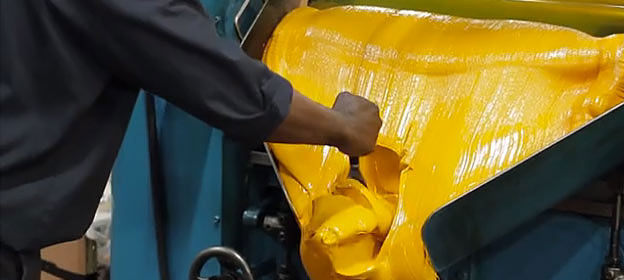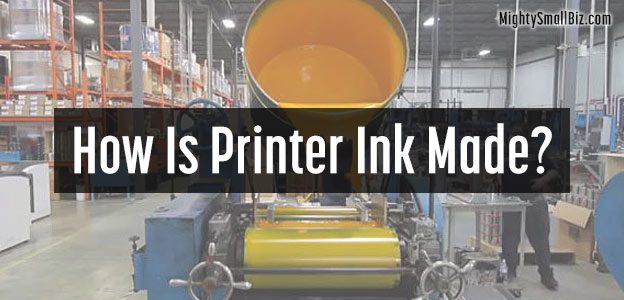How is ink manufactured? Maybe it’s not as fun as learning how chocolate bars or beer is made, but there is an incredible science to the art of making 4-color, CMYK, process ink. (This would be such of a nightmare job for me, being colorblind!) Although companies have their own unique manufacturing techniques, they all have a similar process.
I came across this truly fascinating video from the Printing Ink Company that illustrates the process; from the raw ingredients and mixing process, to the final ink that is sold. Seeing the video makes you feel even worse about how much ink is wasted in your printer! (Click below to view, & please share this page!)
How Ink Is Made: (Video)
Highlight of the video: Essentially, four base colors are made, from which all other colors are derived through mixing. These colors are Cyan, Magenta, Yellow, and Black; commonly known as CMYK color.
How Ink is Made:
- Printing ink is used for a wide variety of things; everything that you see with color on a paper like substance has been printed, including all of the packaging and print material that you see
- Printer ink is composed of 2 primary things; the pigment (giving ink its color) and the vehicle, which is the carrier of the color
- The pigment, a colored powder, is incorporated into the vehicle, which is a sticky varnish (like honey) that varies in thickness
- First the vehicle is heated in order to thin it, so that the pigment can be incorporated. The pigment is then grinded in a bead mill, and then smeared in a 3-roller mill to reduce each pigment particle to its smallest size in order to maximize the color within
- Quality control (QC) now becomes hugely important, ensuring that each batch of ink is the same
- The ink is then subjected to a number of rigorous tests, including a grind test, and bleach test, which checks the color strength
- Once approved, other ingredients are added, including waxes (for rub resistance) driers (so that the ink can dry quickly on paper)
- The tack (stickiness) is tested, as it must be controlled so that the printer transfers it properly to paper
- The ink is run again through another 3-roller mill, refining it further and adds more gloss and polishing
- Before the ink is poured into a can and packaged, it has been through grinding mills, mixers, and a number of quality control tests.

Yum… Looks good enough to eat!
Ink Manufacturing & Quality Control
Not only is the ink subject to internal quality control and scrutiny, but also must meet rigorous standards like ISO 9001.
Before buying ink or toner of any kind, make sure that it meets these industry standards. Drums of this ink may be sold to printing services like Shutterfly, or companies that sell inkjet cartridges.
The generic and OEM printer ink featured on this site from companies like 4inkjets, Clickinks, and 123inkjets, all meet these high standards. Remember to always look for a coupon before you buy ink anywhere.

